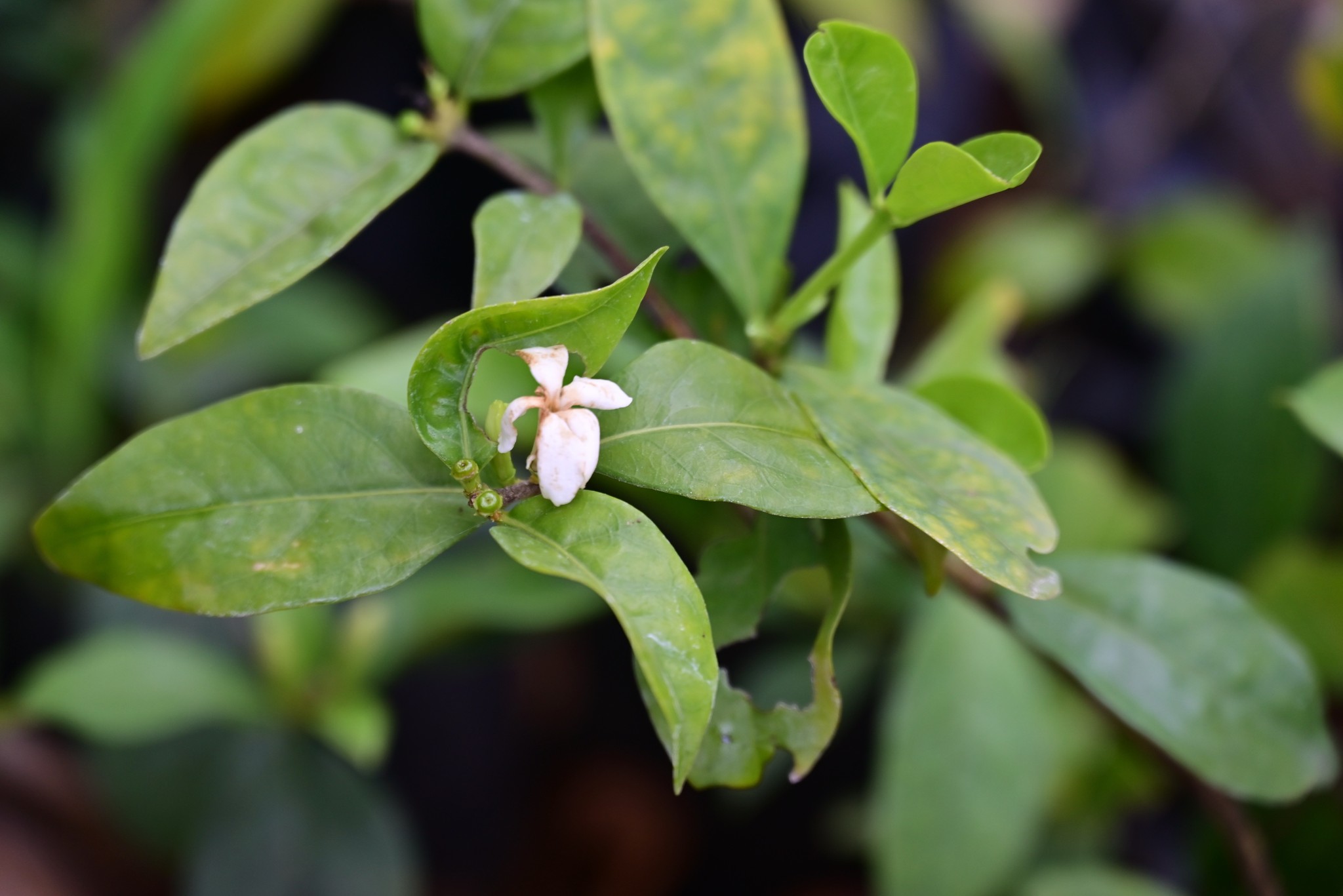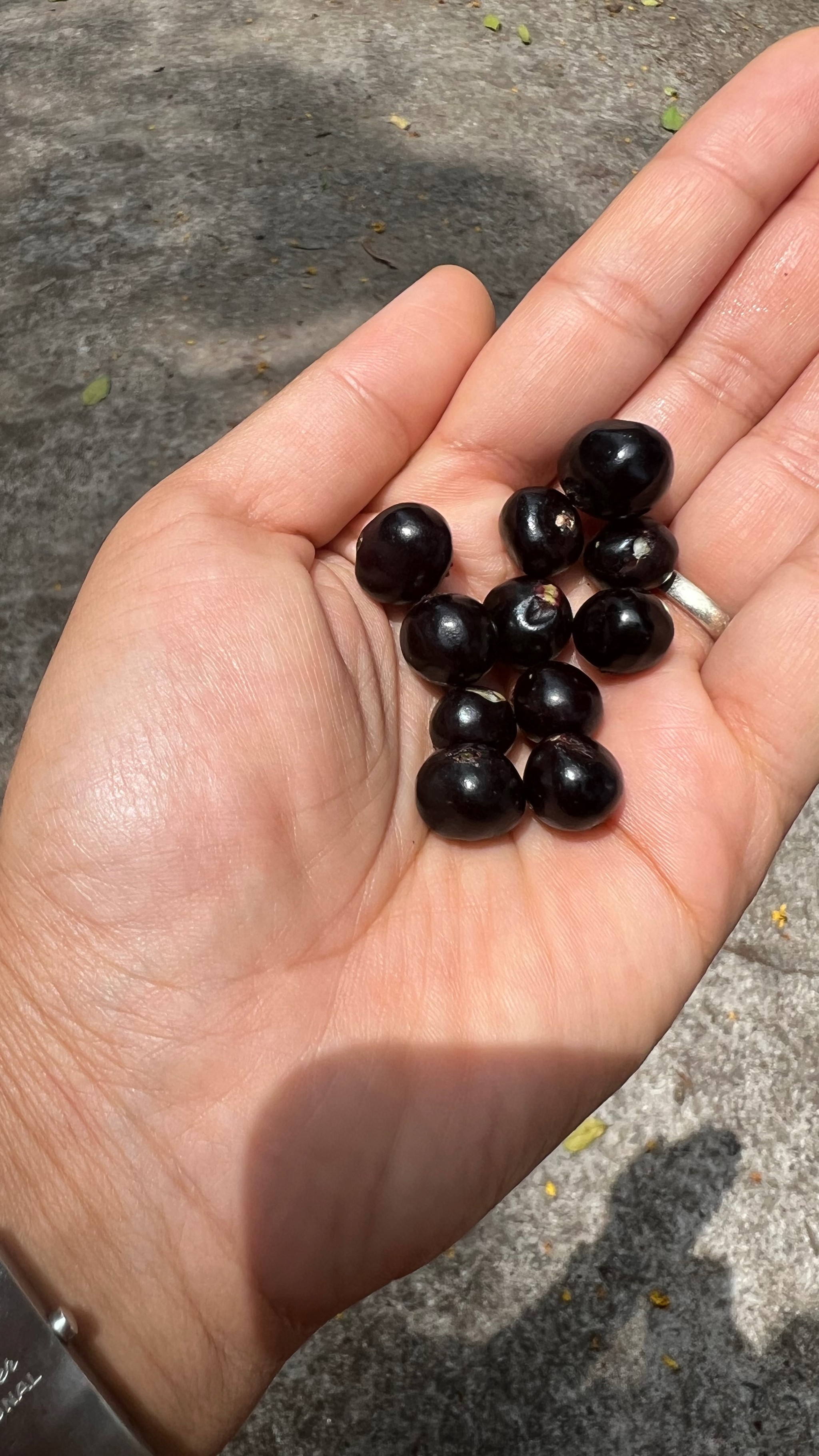Coffea Travencorensis: One of India's Native Coffea Species

The History
According to Wight and Arn. Prodr. 1 , Coffea Travencorensis was first described in 1834 as an indigenous plant in the western region of India, specifically in the Travancore area (in the present-day Kanyakumari district of Tamil Nadu.) The Indian coffee species, including Coffea Bengalensis, Coffea Travencorensis, and Coffea Deccanensis, are believed to be some of the oldest coffee species in the world. These native Indian coffee species are well adapted to the tropical climate of the Western Ghats, a mountain range that runs parallel to the western coast of India.

Coffea travencorensis is a small shrub , and has stiff branches, slightly pubescent leaves, slender thickened nodes, flattened twigs, and brownish bark on younger twigs. The leaves are small, measuring 2.5cm to 3.75cm in length and 7.5cm to 10cm in width. The flowers are solitary or in threes, occasionally in fours, with five petals and a sweet fragrance similar to that of jasmine. The black fruit is broadly didymous and 0.83 cm in diameter (approximately) , and the plant blossoms from April to June — Wight and Arn. Prodr.(1843) 1st Flower Coffea travencorensis
The leaf structures of C. travencorensis are dark on top and lighter green below, and when dried, they turn pale and yellowish.
The Coffea travencorensis plant is of significant importance in India as it is listed as “Vulnerable” in the IUCN Red List of Threatened Species in 2017. We at SICC have developed a species block for genetic research on Coffea species, with a particular focus on the Indian Native species . This block would allow researchers to study the genetic makeup of the plant and identify ways to preserve it. The research is ongoing on Coffea travencorensis, where the 1st blossom is underway and we are closely observing its growth and development. This research will help us understand the ecological and genetic characteristics of this unique coffee species, which will help in conservation efforts and sustainable coffee farming practices.

The cultivation of Coffea travencorensis is threatened by various factors, including climate change, habitat loss. It is important to promote the conservation and sustainable cultivation of this unique coffee species to ensure its survival for future generations.
Even though this species does not have commercial importance as of today, further research is necessary to fully understand its commercial viability.
In conclusion, the cultivation and preservation of Indian native Coffea species are essential to preserve the rich history of coffee in India. Coffea travencorensis, a rare and vulnerable coffee species, is a prime example of the need to conserve and sustainably cultivate these species. As a coffee professional, it is exciting to be part of the effort to preserve Coffea travencorensis, and we will keep updating this blog with further research and progression of these plants.
References
- Wight, R. and Arn. C., Prodr. 1 (1834) Wight, R. and Arn. C., Prodr. (1843) IUCN Red List of Threatened Species. (2017).
- Coffea travencorensis. [online] Available at: https://www.iucnredlist.org/species/153045239/153045254 [Accessed 11 Apr. 2023]. Kew Gardens. (2023).
- Coffea travencorensis. [online] Available at: https://powo.science.kew.org/taxon/urn:lsid:ipni.org:names:747258-1 [Accessed 11 Apr. 2023].
